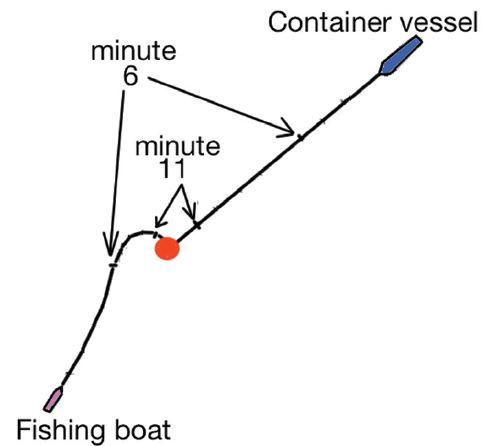201909 Collision sinks fishing boat
A container ship was underway on the open sea in darkness and during a rain storm, on a course of 228° and at a speed of almost 17kt.
The helmsman and OOW were each at a radar but were engrossed in a social conversation with each other. The helmsman sighted the port sidelight of another vessel at a distance of about 0.6nm on the starboard bow and reported the sighting to the OOW. About one minute later, after changing the range of his radar from 12nm to 6nm, the OOW saw the vessel in question and thought it was crossing ahead on the starboard bow – the distance was now about 0.3nm. The OOW ordered 15° to starboard and blew the ship’s horn, then gave the order for hard to starboard.
The other vessel, a fishing boat proceeding at about 8kt, changed course to starboard at the last minute because the OOW on that vessel believed a port-to-port passing was required.
Notwithstanding these actions, the container ship collided with the fishing boat. The crew of the fishing boat abandoned into a lifeboat and were later recovered by the container ship. The fishing boat later sank.

Lessons learned
- Lookout, lookout, lookout. Had a proper lookout been kept on each vessel this collision could easily have been avoided.
- A good lookout is always necessary but extra concentration and vigilance is needed in darkness and in reduced visibility such as during a rainstorm.
- VDR data confirms that the container ship’s radar was showing the fishing vessel’s echo fully 14 minutes before the collision. The bridge team were preoccupied with their conversation, which probably helps explain why they only saw the fishing vessel at the last minute.
- The OOW on the fishing vessel had seen the container ship but he did not adopt a proper systemic methodology for tracking it. At the last minute he acted on assumptions that contributed to the collision.
